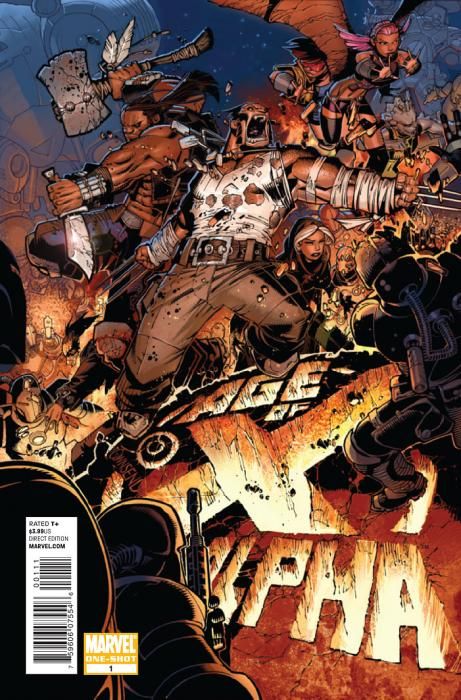Those coming to "Age of X Alpha" #1 looking for the beginning of the story may be disappointed, because the story doesn't really begin here. "Age of X Alpha" is more a set-up issue, an anthology that establishes the status quo of this alternate Earth, delivering four vignettes on some familiar characters, all framed by a group of mutants in Fortress X waiting for battle. It's a smart move to give readers a book like this before starting the story proper as "Alpha" establishes the world and some of the key players. Not everything is laid out, but, as a quick introduction, it's very effective, acting as a complement of sort to the "Age of X Communiques" featured here on CBR.
The framing story, illustrated by Mirco Pierfederici, is where most of the information about the "Age of X" world is provided, usually in allusions or references. Mike Carey doesn't force feed a lot about the world, trusting readers to connect some dots and pick up on what the characters are talking about. Some pieces of dialogue are a little clunky and exist solely to provide some information, like Namor lamenting being in Fortress X and Storm responding that he gave up the oceans for her. But, establishing new character relationships and that mutants are on the run, sequestered in Fortress X, fending off humanity, is the point of the comic and, sometimes, the only way to deliver certain pieces of information is as directly as possible.
Within this framework, four stories of the past are shared, the first focusing on Scott Summers, the Basilisk. It's the best story of the bunch, drawn with style and verve by Gabriel Hernandez Walta in a style reminiscent of Bill Sienkiewicz at his most restrained. Summers was used as a means of capital punishment by Arcade, the governor and overseer of executions at Alcatraz. He keeps Summers locked up, using his optic blasts to kill mutants sentenced to death for being mutants. It's a horrific story and clearly establishes right off the bat that this Scott Summers is nothing like the Cyclops we know and love. This is a man whose eyelids were cut off so he couldn't stop his optic blasts.
The second and third stories are somewhat forgettable, the first showing the rift between Cannonball and Husk, and the second focusing on Wolverine and a human doctor who now lives in Fortress X. Both stories help establish the tone of the world, but, unlike the others, neither seems drastically divorced from stories that could be told in the regular X-books. The Wolverine story, in particular, about a 'cure' for the X-gene, would only require a couple of changes to the dialogue before it could simply be another story in whatever the latest X-Men anthology title is. Neither story feels necessary or essential like the first and final ones do.
The final tale is the one that ties into the continuity of "Age of X" the most, detailing the creation of Fortress X as Magneto, thought dead, rescues a group of mutants and creates the safe haven for his people. In that story, you get a strong sense of what Magneto's role in this world is and what he means to mutants. He's very much a messianic leader, one that everyone looks to and relies upon. When he's thought dead, the effect that has on morale is noticeable. The attitude displayed seems to be that of 'if the humans could kill Magneto, why fight at all?'
The use of different artists for the issue is a smart choice, giving each story its own feel. Walta is the clear stand-out, but the rest hold their own. Diaz shows a strong ability to show emotion and draws expressive characters, while Davidson is softer and delivers very clear pages. Pierfederici seems like an odd choice for the framing narrative since his painted work isn't as clear as other artists' work. His pages show more characters than any other. An artist that could deliver strong, clearer versions of these alternate takes on the X-characters, however, would have been more fitting. He would have been more suited to one of the other stories, perhaps swapping places with Barberi or Diaz.
The main story of "Age of X" doesn't get going in "Alpha," but this different world is established, as are some of the different takes on familiar characters. The first and final stories are the most effective, and the framing sequence packs in a lot of information. Think of this issue as a primer for when the story kicks off next month in "X-Men Legacy" #245 and a good one at that.

